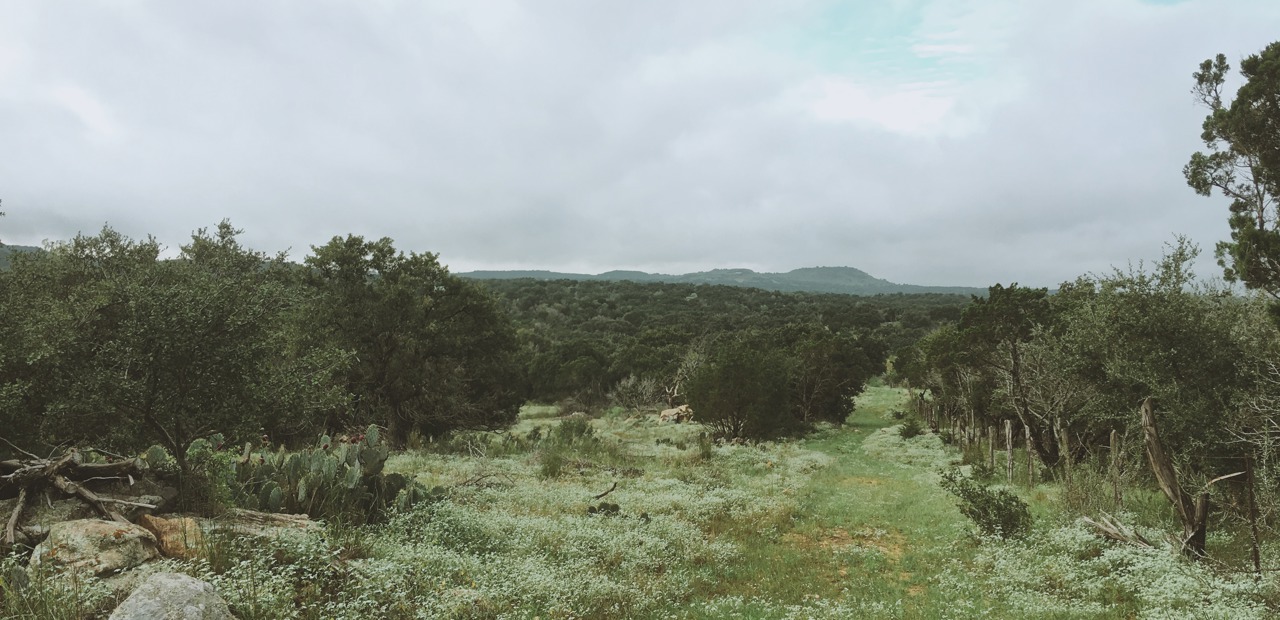

Leopold Live! Chapter 2 Recap: Herbicides and Brush Management
December 6, 2021
This past month we premiered our seventh episode of Leopold Live!: Chapter 2 with our wonderful partners at the Selah, Bamberger Ranch Preserve, and we truly enjoyed connecting with you to talk about private land stewardship here in Texas. In this latest episode we spoke with Bamberger’s ranch manager, Steven Fulton, about herbicides and brush management and how this tool can help you manage wildlife habitat on your landscape.
Steve began the session explaining that while they mainly use mechanical or biological methods for brush control, herbicides can sometimes be the best tool for the job. On the ranch they mainly use herbicides on exotic, invasive plants and some woody native species that can be difficult to control otherwise. When it comes to the wildlife tax valuation program in Texas, herbicide application is considered a qualifying management practice and can check one of your boxes in your wildlife management plan. Steve explained that you do not need to do large scale applications on your property to qualify. The threshold is either 10% of your property area or up to 10 acres, whichever is smaller.
One of the most important considerations when using herbicides is safety. Before even pulling the chemicals out of the cabinet you want to make sure you have the proper personal protective equipment (PPE). Steve listed out a few essential pieces of gear that you should have on hand before beginning an application: a long-sleeved shirt, Tyvek suit, nitrile gloves, goggles or eyeglasses with wrap around sides, and a filter mask (especially if you’re using aerosolized chemicals). Another aspect to herbicide safety is ensuring that your equipment is in good working condition. Steven suggests filling any tool, such as a hand sprayer or tank, with water to check for any potential leaks before filling them with your herbicide.
Next Steve talked a bit about the different types of equipment they use on the ranch to apply herbicides. For large, flatter areas like pastures they will use a tank with a sprayer that puts out cones of broadleaf weed killing herbicide. This will help ensure the pasture consists mainly of grass that can be grazed or cut and baled for hay. For smaller areas and species (such as poison ivy or poison oak), Steve suggests using a spray bottle to spot spray. This can be a quick and effective way to treat highly trafficked areas such as walking trails.
One of the main herbicide application methods used on the ranch is the cut stump treatment. Steve provided a quick demonstration of this treatment on an invasive, exotic species (lavender vitex) present on the ranch. He explained this should be made on a freshly cut stem or trunk and with enough herbicide for the plant to absorb enough to kill it. If too little herbicide is taken up by the plant, it can potentially root sprout and will require further treatments to achieve a total kill. The cut stump method is the preferred technique on the ranch as it does not use aerosolized sprays that have the potential to impact non-target species.
Before using herbicides as a management tool, Steve highly recommends getting your pesticide applicator license and ensuring it is kept up to date. Going through the courses required for the license ensures you know how to use these chemicals properly, safely, and efficiently. In addition to the required coursework, one of the components of maintaining a license is keeping thorough records of the herbicides used on the property.
We rounded the episode out with a short Q&A session with Steve.
What is the proper storage method for herbicides?
Steve mentioned that it is important to have proper storage both from a safety perspective and a chemical efficacy perspective. On the ranch they have a locked, steel cabinet that prevents children and/or animals from accessing the herbicides and potentially poisoning themselves. In addition, the cabinet is located under a roof to keep direct sunlight off and to keep the chemicals from getting too hot. Excessive heat can cause herbicides to degrade quickly and make them not as effective for treatments.
What is the best time of year to apply herbicides?
When plants are actively growing, which is generally the springtime. This is the best time of year to ensure plants uptake as much of the chemical as possible and in turn you do not have to use as much to achieve a total kill. Steve mentioned you can add compounds, such as surfactants, that can increase your herbicide efficacy on plants with a waxy leaf surface. These surfactants remove the waxy surface so more of the chemical can be taken up by the plant and result in a better kill rate.
What are some natural alternatives to these herbicides?
Steve mentioned there are beginning to be more and more natural or organic herbicides on the market. One thing to keep in mind about these alternatives is the price as they can be twice as much as traditional herbicides. For smaller landowners this may be better option since they are generally treating smaller areas, but for larger properties, such as the Bamberger Ranch, this is not always a feasible option due to the cost.
Leopold Live!: Chapter 2 is off to a great start, and our crew can’t wait to share our next episodes with you! Keep an eye on Facebook for upcoming episodes in the new year.
Learn More
Private Land Stewardship Academies
Training land stewardship professionals working with private landowners and educating a community of practice on the importance of science-based conservation. Click Learn More for free access to resources.








